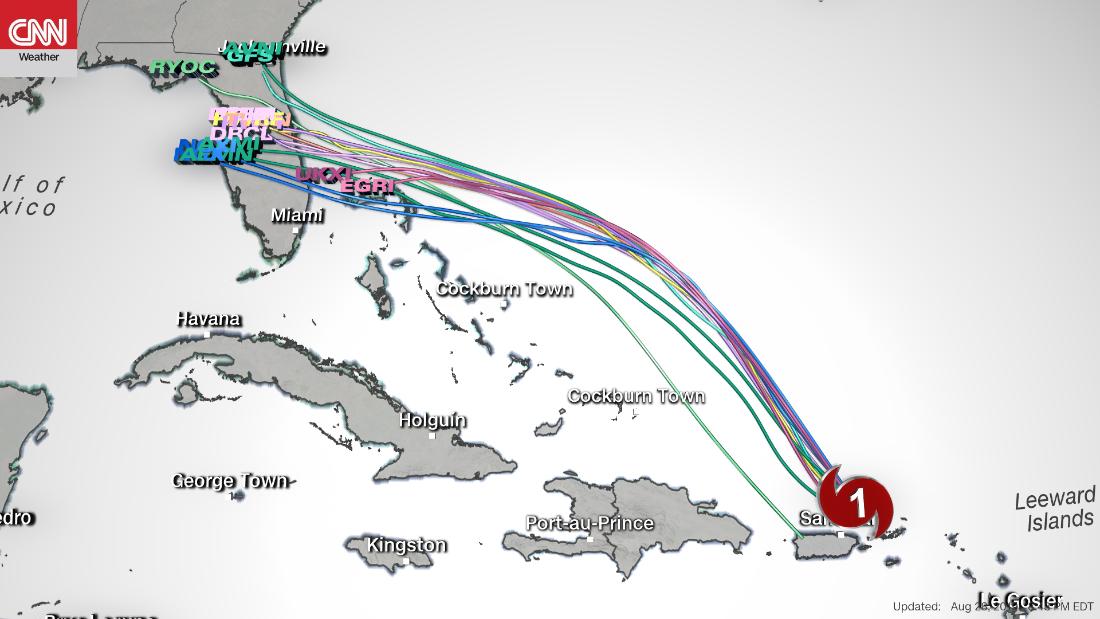
The simple lines actually come from some of the fastest computers in the world, making billions of computations
Also known as spaghetti plots, these models show where a tropical system, such as a hurricane, may go.
The more they are clustered together, the higher the confidence in the forecast.
Here's what you should know about spaghetti models.
Are all spaghetti models the same?
No. There are different kinds of spaghetti models: dynamical models, statistical models and ensemble models.
Dynamical models require hours on a supercomputer solving physical equations of motion to produce a forecast.
Statistical models, in contrast, are based off on historical relationships between storm behavior and storm-specific details such as location and date.
Ensemble or consensus models are created by combining the forecasts from a collection of other models.
All of the models show the expected track of the storm and many also show how strong the storm will be.
Who makes them?
Models are run and operated by governments and private companies around the world. Some are public, while others are private.
Usually, the name of the model can give away who is responsible.
Take, for example, the "Navy Global Environmental Model" which is run by the United States Navy's Fleet Numerical Meteorology and Oceanography Center.
Some of the more familiar models are the American (GFS) and European (ECMWF) models run by the US government and a partnership of European countries respectively.
The combination of plotting them all on one map is done by various companies. For example, CNN uses a software company to plot the most recent models on our CNN storm tracker when tracking active storms.
How do you read one?
The forecast track from each model is represented by a line. When these are all plotted together, they can look like a bunch of spaghetti.
Sometimes they spread out and go all over the place. That is a good indication that there is low confidence in where the storm is likely to go.
However, when they are all packed in close together, the forecaster can be more confident in where the storm is going.
When is a good time to check the models?
The easy answer is, all the time. These models run multiple times a day and can change very quickly.
The key is to look for trends. In other words, did all the models shift to the north or south -- or do most of the models show the storm moving faster?
The other is consistency. Are the plots moving north, for instance, and have they done that the last three times you looked?
Bagikan Berita Ini














0 Response to "When it's hurricane season, people check the spaghetti models. Here's what they are and how to read them"
Post a Comment